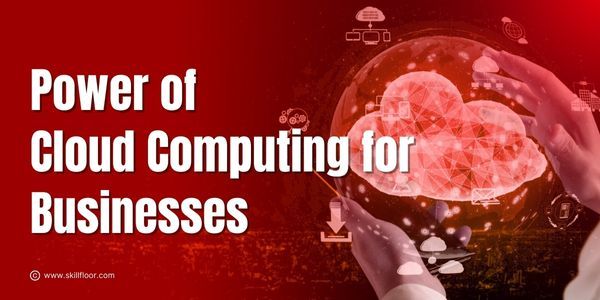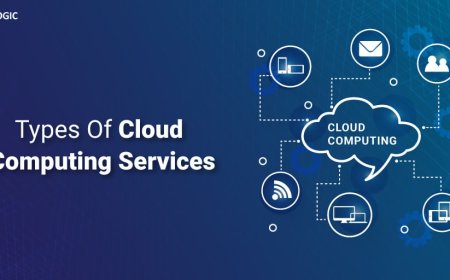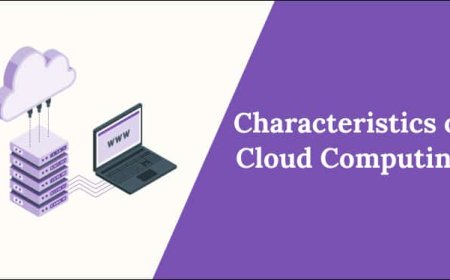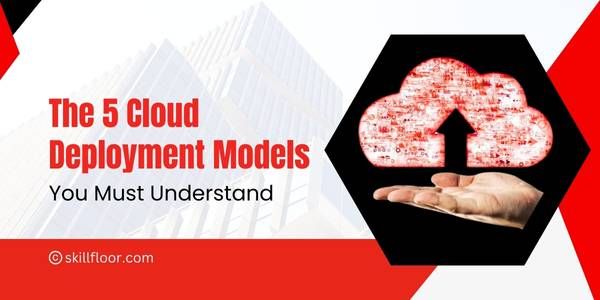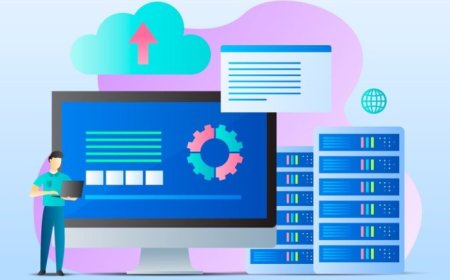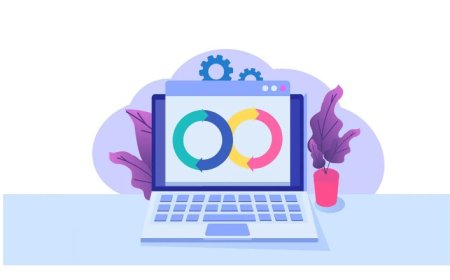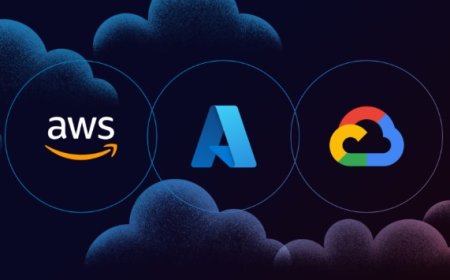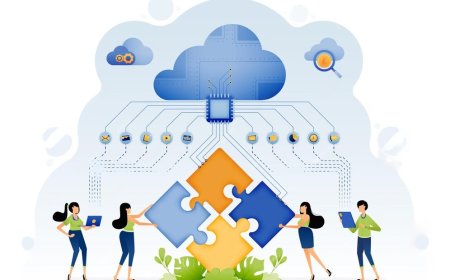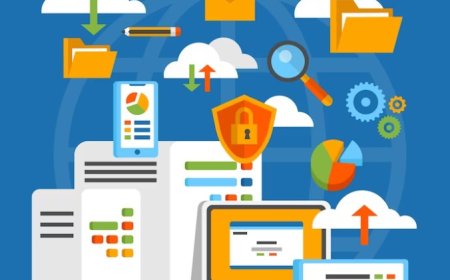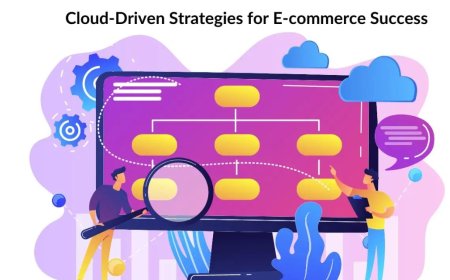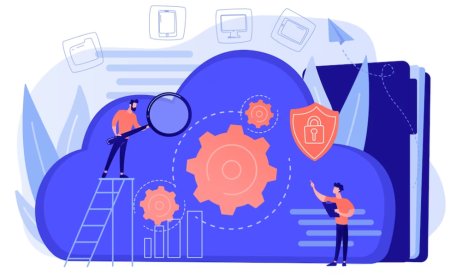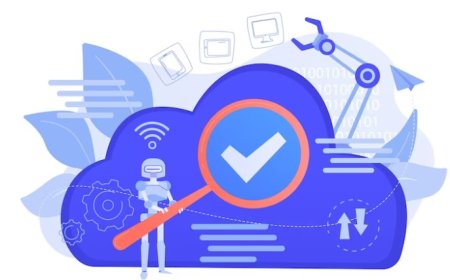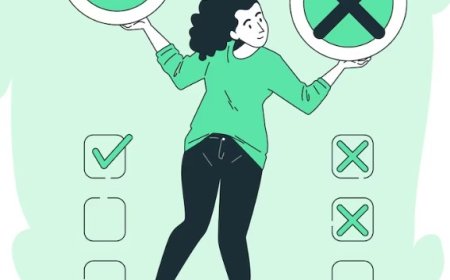TABLE OF CONTENTS:
-
Evolution of Cloud Computing
-
Cloud Computing Concepts
-
How Cloud Computing Works
-
Cloud Computing Tools
-
Cloud Computing Services Types
-
Cloud Computing Fundamentals
-
Challenges of Cloud Computing
-
Cloud Computing Trends
-
Advantages and Disadvantages of Cloud Computing
-
Future of Cloud Computing
Cloud Computing has revolutionized the way businesses and individuals store, access, and manage data and applications. It is a model that enables convenient, on-demand access to a shared pool of computing resources, such as storage, servers, and applications, over the internet. Instead of relying solely on local infrastructure, cloud computing leverages remote servers and networks to deliver scalable and flexible computing power.
Cloud computing offers numerous benefits, including cost savings, scalability, reliability, and convenience. Organizations can avoid the upfront costs of purchasing and maintaining hardware and infrastructure, as cloud providers handle the hardware setup and maintenance. Scalability allows businesses to quickly adjust their computing resources based on demand, ensuring optimal performance without overprovisioning.
Reliability is a key aspect of cloud computing, as data and applications are stored across multiple servers and locations, reducing the risk of data loss and downtime. Additionally, cloud computing offers convenience by enabling users to access their data and applications from any device with an internet connection, facilitating remote work and collaboration.
There are various types of cloud computing services available, including Infrastructure as a Service (IaaS), Platform as a Service (PaaS), and Software as a Service (SaaS). These services cater to different needs, providing users with varying levels of control and management over their computing resources.
As technology advances, cloud computing continues to evolve, introducing new features, capabilities, and deployment models. Hybrid and multi-cloud environments have emerged, allowing organizations to combine private and public cloud services to meet their specific requirements.
cloud computing has transformed the way businesses and individuals approach computing, offering cost-effective, scalable, reliable, and convenient solutions for storing and accessing data and applications. It has become an integral part of digital transformation strategies, empowering organizations to focus on their core competencies while leveraging the flexibility and efficiency of cloud-based services.
1. Evolution of Cloud Computing
The evolution of cloud computing has been a remarkable journey that has transformed the way businesses and individuals approach computing and data management. It all started with the concept of time-sharing in the 1950s and 1960s, where multiple users could access a single mainframe computer simultaneously. This laid the foundation for the idea of sharing computing resources.
In the 1990s, the internet became widely accessible, and the concept of virtualization emerged. Virtualization allowed multiple virtual machines to run on a single physical server, enabling better resource utilization and cost savings. This was a significant step towards the development of cloud computing.
The term "cloud computing" gained popularity in the early 2000s when companies like Amazon Web Services (AWS) introduced infrastructure services that allowed users to access computing resources over the internet. This marked the beginning of the era of Infrastructure as a Service (IaaS), where users could provision and manage virtual servers, storage, and networking resources without the need for physical infrastructure.
As cloud computing gained traction, Platform as a Service (PaaS) and Software as a Service (SaaS) models emerged. PaaS provided developers with a platform to build, deploy, and manage applications without the complexity of infrastructure management. SaaS, on the other hand, offered ready-to-use software applications delivered over the internet, eliminating the need for local installation and maintenance.
With advancements in virtualization, networking, and storage technologies, cloud computing expanded its capabilities. Public, private, and hybrid cloud models became prevalent, offering organizations flexibility in choosing the deployment model that suits their specific needs.
Moreover, the rise of containers and container orchestration platforms, such as Docker and Kubernetes, revolutionized application deployment and management in the cloud. Containers provided a lightweight and portable way to package and run applications, enhancing scalability and efficiency.
The evolution of cloud computing continues with the introduction of serverless computing, edge computing, and artificial intelligence (AI) capabilities within cloud platforms. Serverless computing allows developers to focus on writing code without the need to manage underlying infrastructure, while edge computing brings computation and data storage closer to the end-users, enabling faster processing and reduced latency. AI capabilities within cloud platforms empower businesses to leverage machine learning and data analytics at scale.
2. Cloud Computing Concepts
Cloud computing is a revolutionary concept that has transformed the way businesses and individuals approach computing and data management. At its core, cloud computing involves the delivery of on-demand computing resources over the internet. It offers a flexible and scalable model where users can access and utilize virtualized computing infrastructure, storage, and applications without the need for physical infrastructure.
The key concepts of cloud computing include:
-
Virtualization: The technology that enables the creation of virtual resources, such as virtual servers and storage, allowing for better resource utilization and cost savings.
-
Service Models: Cloud computing offers different service models, including Infrastructure as a Service (IaaS), Platform as a Service (PaaS), and Software as a Service (SaaS). Each model provides varying levels of control and management over computing resources.
-
Deployment Models: Cloud computing provides various deployment models, such as public, private, and hybrid clouds. Public clouds are operated by cloud service providers and offer resources to multiple users over the internet. Private clouds are dedicated to a single organization and can be on-premises or hosted by a third-party provider. Hybrid clouds combine both public and private cloud environments.
-
Scalability and Elasticity: Cloud computing allows for easy scalability, where users can quickly and dynamically adjust their computing resources based on demand. Elasticity enables automatic scaling up or down of resources in response to workload changes.
-
Cost Efficiency: Cloud computing offers cost advantages as users can avoid upfront infrastructure investments and only pay for the resources they consume. It eliminates the need for maintaining and managing physical hardware.
-
Data Security and Privacy: Cloud service providers implement robust security measures to protect data stored and processed in the cloud. However, organizations must also take responsibility for ensuring data security and compliance with relevant regulations.
-
Remote Access and Collaboration: Cloud computing enables users to access their data and applications from anywhere with an internet connection, facilitating remote work and collaboration among teams.
3. How Cloud Computing Works?
Cloud computing operates through a network of remote servers that are hosted on the internet. These servers store and manage data, applications, and computing resources, which can be accessed by users over the internet. The process begins when a user or organization subscribes to a cloud service provided by a cloud service provider (CSP).
When a user wants to use cloud computing resources, they connect to the cloud service through the internet using their device, such as a computer, smartphone, or tablet. The user's device acts as a client that communicates with the cloud servers. The client sends requests to the cloud servers to perform specific tasks, such as storing data, running applications, or processing computational tasks.
The cloud servers, which are housed in data centers, receive the client's requests and process them accordingly. These servers are highly scalable and can handle multiple requests simultaneously, ensuring efficient and reliable service. The cloud infrastructure provides virtualized resources, such as virtual servers, storage, and networks, to fulfill the user's requirements.
The client and cloud servers communicate through the internet using protocols and APIs (Application Programming Interfaces). The client can send data to be stored in the cloud, retrieve data from the cloud, or execute applications remotely. The cloud servers handle the processing and storage of data, as well as the execution of applications, based on the user's requests.
Behind the scenes, the cloud service provider manages and maintains the infrastructure, ensuring its availability, security, and performance. They handle tasks such as hardware provisioning, software updates, data backup, and security measures to protect the user's data and ensure reliable service.
4. Cloud Computing Tools:
Cloud computing relies on a variety of tools and technologies to facilitate the management and utilization of computing resources in the cloud. These tools play a crucial role in ensuring efficient deployment, scalability, security, and performance of cloud-based applications and services. Here are some commonly used cloud computing tools:
Amazon Web Services (AWS): AWS provides a comprehensive suite of cloud services, including compute, storage, networking, and databases. It offers tools like Amazon EC2 for virtual server provisioning, Amazon S3 for scalable storage, and Amazon RDS for managed databases.
Microsoft Azure: Azure is another popular cloud platform that offers a wide range of services for building, deploying, and managing applications. It provides tools like Azure Virtual Machines, Azure Blob Storage, and Azure SQL Database.
Google Cloud Platform (GCP): GCP offers a collection of cloud services for computing, storage, and data analytics. It includes tools such as Google Compute Engine, Google Cloud Storage, and BigQuery for processing and analyzing large datasets.
Kubernetes: Kubernetes is an open-source container orchestration platform that simplifies the management and scaling of containerized applications in the cloud. It allows for automated deployment, scaling, and management of containers across multiple hosts.
Docker: Docker is a popular containerization platform that enables developers to package applications and their dependencies into lightweight containers. It provides an efficient and consistent way to deploy applications across different environments.
Terraform: Terraform is an infrastructure-as-code tool that allows for the provisioning and management of cloud infrastructure resources. It enables users to define their infrastructure requirements in a declarative language and automates the deployment process.
Ansible: Ansible is a configuration management and automation tool that helps in provisioning and managing infrastructure resources across multiple cloud environments. It allows for efficient deployment and configuration of cloud-based applications.
Apache Spark: Apache Spark is a powerful open-source framework for big data processing and analytics. It provides scalable and distributed computing capabilities, making it suitable for processing large datasets in the cloud.
5. Cloud Computing Services Types:
Cloud computing services can be broadly categorized into three types: Infrastructure as a Service (IaaS), Platform as a Service (PaaS), and Software as a Service (SaaS).
Infrastructure as a Service (IaaS): IaaS provides virtualized computing infrastructure over the internet. Users have control over their operating systems, applications, and data, while the cloud service provider manages the underlying infrastructure, including servers, storage, and networking. It offers flexibility and scalability, allowing users to quickly provision and scale resources based on their needs.
Platform as a Service (PaaS): PaaS offers a higher level of abstraction compared to IaaS. It provides a complete development and deployment environment for applications, including operating systems, databases, and development tools. Users can focus on coding and deploying applications without worrying about infrastructure management. PaaS simplifies application development and provides scalability and automatic resource management.
Software as a Service (SaaS): SaaS delivers ready-to-use applications over the internet. Users access and use the software through a web browser or a client application, without the need for installation or maintenance. The cloud service provider handles all aspects of the software, including infrastructure, security, and updates. SaaS offers convenience, as users can access applications from any device with an internet connection.
These cloud computing service types cater to different needs and levels of control for users. Organizations can choose the most suitable service type based on their requirements, whether they need full control over infrastructure and applications (IaaS), a development environment (PaaS), or ready-to-use software (SaaS).
6. Cloud Computing Fundamentals
Cloud computing is a fundamental paradigm in which computing resources, including servers, storage, and applications, are delivered over the internet. It allows users to access and utilize these resources on-demand, without the need for physical infrastructure. Cloud computing offers flexibility, scalability, and cost-efficiency, enabling organizations to focus on their core business activities while leveraging the power of remote computing. It has become a cornerstone of modern technology, revolutionizing the way businesses operate and accelerating digital transformation across industries.
7. Challenges of Cloud Computing
While cloud computing offers numerous benefits, it also presents certain challenges. One of the key challenges is data security and privacy. Storing sensitive data in the cloud raises concerns about unauthorized access, data breaches, and compliance with regulations. Ensuring robust security measures and encryption techniques is essential to mitigate these risks.
Another challenge is vendor lock-in. When organizations rely heavily on a specific cloud service provider, it can be difficult to switch providers or migrate applications to a different platform. Interoperability and portability standards are crucial to address this challenge and maintain flexibility.
Performance and reliability are also important considerations. Users depend on the availability and responsiveness of cloud services, and any downtime or latency issues can impact business operations. Service level agreements (SLAs) and monitoring mechanisms help address performance concerns.
Cost management is another challenge, as cloud usage can quickly escalate costs if not carefully monitored and optimized. Organizations need to implement cost control measures, such as resource provisioning and utilization tracking, to ensure efficient cloud spending.
Lastly, cloud computing requires a skilled workforce capable of managing and leveraging cloud technologies effectively. The shortage of qualified cloud professionals can pose a challenge in adopting and implementing cloud solutions.
Addressing these challenges requires careful planning, robust security measures, continuous monitoring, and the development of cloud-native skills within organizations. By understanding and proactively managing these challenges, organizations can harness the full potential of cloud computing while mitigating associated risks.
8. Cloud Computing Trends
Cloud computing continues to evolve and shape the modern technology landscape, with several prominent trends emerging in recent years. One of the key trends is the increasing adoption of multi-cloud and hybrid cloud environments. Organizations are recognizing the benefits of leveraging multiple cloud providers and combining public and private clouds to achieve greater flexibility, scalability, and resilience. This approach allows businesses to optimize their workloads and choose the most suitable cloud services for different applications.
Another significant trend is the rapid growth of serverless computing. Serverless architecture abstracts away the infrastructure management, allowing developers to focus solely on writing and deploying code. This model offers improved scalability, reduced costs, and faster time to market for applications. With serverless computing, developers can easily scale their applications based on demand and pay only for the actual resources used.
Artificial intelligence (AI) and machine learning (ML) are also playing a vital role in shaping cloud computing. Cloud providers are integrating AI and ML capabilities into their platforms, enabling businesses to leverage these technologies without the need for extensive infrastructure investments. AI-powered services such as natural language processing, image recognition, and predictive analytics are becoming more accessible, empowering organizations to extract valuable insights and enhance decision-making processes.
The security aspect of cloud computing has become a growing concern, leading to the rise of cloud-native security solutions. As data breaches and cyber threats become more sophisticated, cloud providers are prioritizing robust security measures to protect customer data and ensure compliance. This includes features like encryption at rest and in transit, identity and access management, and continuous monitoring and threat detection.
Finally, edge computing has emerged as a significant trend in cloud computing. Edge computing brings computational power closer to the data source, reducing latency and improving real-time processing capabilities. This trend is particularly relevant in applications that require instant response times, such as IoT devices, autonomous vehicles, and smart cities. By processing data at the edge, organizations can enhance performance, reduce bandwidth requirements, and ensure reliable connectivity.
9. Advantages and Disadvantages of Cloud Computing
Cloud computing offers numerous advantages that have made it a popular choice for businesses and individuals alike. One of the key advantages is the flexibility and scalability it provides. With cloud computing, users can easily scale up or down their computing resources based on their needs, allowing for efficient resource allocation and cost optimization. Additionally, cloud computing eliminates the need for upfront infrastructure investments, as users can pay for the resources they use on a pay-as-you-go basis.
Another advantage is the accessibility and ease of collaboration. Cloud computing allows users to access their data and applications from anywhere with an internet connection, making it convenient for remote work and collaboration among teams. This accessibility promotes productivity and enables seamless sharing and real-time collaboration on documents and projects.
Cloud computing also offers improved reliability and disaster recovery capabilities. Cloud service providers typically have robust infrastructure and backup systems in place, ensuring high availability and data redundancy. In the event of a hardware failure or natural disaster, data can be easily restored from backups, minimizing downtime and data loss.
However, there are also some disadvantages associated with cloud computing. One of the main concerns is the issue of data security and privacy. Storing data on remote servers raises concerns about unauthorized access and potential data breaches. While cloud providers implement various security measures, it is crucial for users to implement their own security protocols and carefully select reputable and compliant cloud service providers.
Another disadvantage is the dependency on internet connectivity. Since cloud computing relies on an internet connection, any disruption in connectivity can impact access to data and applications. This dependency can be problematic for users in areas with unreliable or limited internet access.
There may be concerns regarding vendor lock-in and interoperability. Migrating data and applications to a different cloud provider or bringing them back in-house can be challenging and may require significant time and effort. It is essential for users to carefully consider the implications and potential costs of vendor lock-in when choosing a cloud provider.
10. Future of Cloud Computing
The future of cloud computing looks promising, with several key trends and advancements shaping its trajectory. One of the significant trends is the continued growth and adoption of edge computing. As the Internet of Things (IoT) expands and generates massive amounts of data, processing that data at the edge of the network, closer to the source, will become increasingly important. Edge computing enables faster response times, reduces latency, and improves the efficiency of data transmission, making it ideal for applications like autonomous vehicles, smart cities, and industrial automation.
Another area of development is the integration of cloud computing with emerging technologies like artificial intelligence (AI), machine learning (ML), and blockchain. Cloud providers are integrating AI and ML capabilities into their platforms, allowing users to leverage advanced analytics, predictive modeling, and automation. Blockchain technology is also being integrated into cloud platforms to enhance data security, transparency, and trust in cloud-based transactions and processes.
The hybrid and multi-cloud approach is expected to gain further prominence in the future. Organizations are likely to leverage multiple cloud providers and combine public and private clouds to achieve greater flexibility, resilience, and cost optimization. This approach allows businesses to select the most suitable cloud services for different applications, distribute workloads, and avoid vendor lock-in.
Security and privacy will remain critical concerns in the future of cloud computing. Cloud service providers will continue to enhance their security measures, implementing advanced encryption techniques, access controls, and monitoring systems to protect customer data. Privacy regulations and compliance requirements will also shape the future of cloud computing, driving the need for more robust data protection mechanisms and ensuring adherence to privacy laws.
Quantum computing holds the potential to revolutionize cloud computing in the long term. Quantum computers have the ability to solve complex problems at unprecedented speeds, which can have significant implications for data analysis, cryptography, and optimization algorithms. While quantum computing is still in its early stages, cloud providers are actively exploring its integration into their offerings, paving the way for quantum-powered cloud computing in the future.
In conclusion, Cloud Computing has revolutionized the way businesses and individuals access, store, and process data and applications. Its flexibility, scalability, accessibility, and collaboration features have made it a popular choice across industries. As cloud computing continues to evolve, we can expect to see further advancements in edge computing, AI and ML integration, hybrid and multi-cloud architectures, and enhanced security measures. The future of cloud computing holds tremendous potential for driving innovation, improving efficiency, and enabling organizations to leverage emerging technologies. With its numerous advantages and the ongoing advancements in the field, cloud computing is set to play a pivotal role in shaping the digital landscape for years to come.
Related Posts
Components of Cloud Computing in Simple Terms
The power of cloud computing: secure, scalable, and accessible data storage. Don...
The Importance of Cloud Computing for Businesses
Learn how cloud computing helps businesses grow with flexibility, cost savings, ...
What is Cloud Computing and Who Uses Cloud Services?
Explore the realm of cloud computing, a transformative technology that enables u...
Key Characteristics of Cloud Computing - Comprehensive ...
Explore the fundamental features of Cloud Computing in this comprehensive guide,...
Skills Required to Become a Cloud Engineer
Explore the essential skills required to become a successful cloud engineer. Gai...
Understanding the Different Cloud Deployment Models
Confused about cloud deployment models? Don't miss out on understanding the diff...
Cloud Security Best Practices: Protecting Your Data
Explore essential cloud security best practices to safeguard your valuable data....
Cloud Computing: Practical Guide to Mastering the Cloud
Explore the essentials of Cloud Computing with this practical guide, designed fo...
Cloud Security Best Practices: Safeguarding Your Digita...
Explore cloud security best practices to safeguard your digital assets. Learn ke...
Serverless Computing: A Comprehensive Guide
Explore the world of Serverless computing with our comprehensive guide. Learn ke...
Cloud Computing Basics: A Beginner’s Guide
Explore the fundamentals of cloud computing in our beginner's guide. Learn how t...
Exploring the Synergy Between Cloud Computing and DevOps
Discover the powerful synergy between cloud computing and DevOps. Explore how th...
Cloud Computing Basics: A Beginner’s Guide
Explore the top cloud service providers - AWS, Azure, and Google Cloud. Compare ...
The Cloud's Role in Disaster Recovery and Resilience Pl...
Explore the crucial role of the cloud in disaster recovery and resilience planni...
Benefits of Cloud Computing for Businesses of All Sizes
Discover the advantages of cloud computing for businesses of all sizes. From cos...
The Impact of Cloud Computing on Data Analytics and Big...
Explore the profound Impact of Cloud Computing on Data Analytics and Big Data. D...
Cloud Computing for E-commerce: Scaling for Success
Learn about cloud computing for e-commerce and discover strategies to scale your...
The Scope Of Cloud Computing
Explore the vast scope of cloud computing, from its benefits to its impact on bu...
The Role of Artificial Intelligence in Cloud Computing
Explore how the convergence of Artificial Intelligence (AI) and Cloud Computing ...
Navigating the Cloud: Pros and Cons of Cloud Computing
Discover the future of cloud computing. Explore the benefits and drawbacks of na...

















































